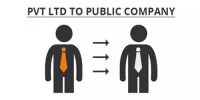Facultative reinsurance is purchased by a principal insurer to cover a single risk or a block of risks held in the principal insurer’s book of business. Under this method, each individual risk is submitted by the ceding office to the reinsurer who can accept or decline whatever sum they consider appropriate subject to an amount of their acceptance being approved by the ceding office. It allows the reinsurance company to review individual risks and determine whether to accept or reject them.
Some key points:
- If there remains a balance after retention he makes a request which is usually made through a slip detailing the particulars of the risk.
- If a reinsurer is interested in the risk then lie initials the slip clearly indicating the percentage or amount of risk he is willing to subscribe.
- In this way, the insurer goes from reinsurer to reinsurer unless 100% of the risk is absorbed.
- The agreement does not make it binding upon the re-insuring company to provide reinsurance on a particular risk.
- This method differs from the shopping in the sense that the two companies are agreed in advance as to form in which risks, premium, terms, and other details are to be submitted.
- Many expenses connected with shopping are reduced here.
Advantages:
- It is advantageous to ceding company since it can pick and choose as to which risks are too, be reinsured and which risks are not.
- It is advantageous to reinsurers because they can apply underwriting judgment case by case and may accept or reject.
Disadvantages:
- Formalities involved in obtaining cover are much more expensive in comparison to a treaty.
- A lot of inconveniences involved in the procedure.
- The insured is left insecure during the time required for the arrangement of facultative cover.
- May cause the business to be lost to a competitor who might have automatic treaty cover.
















